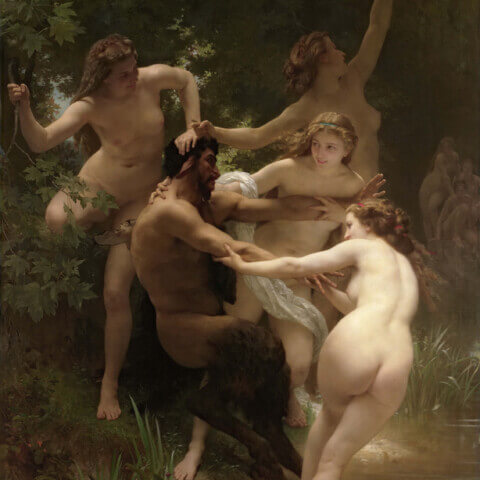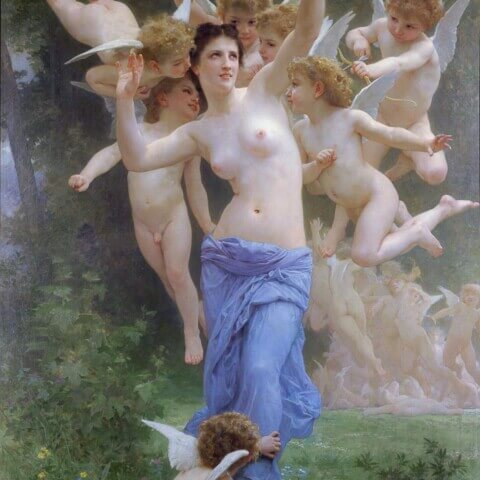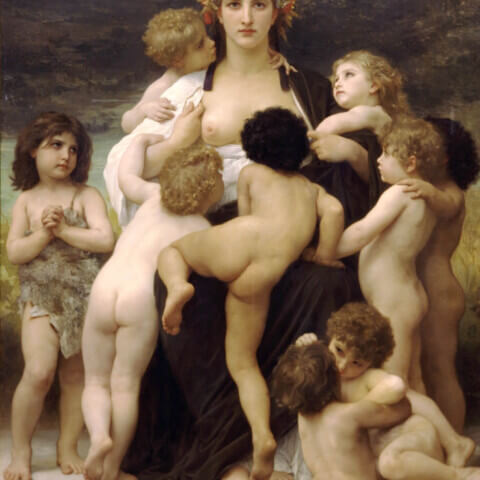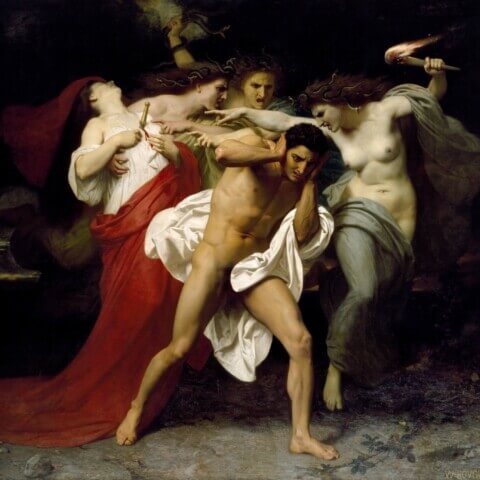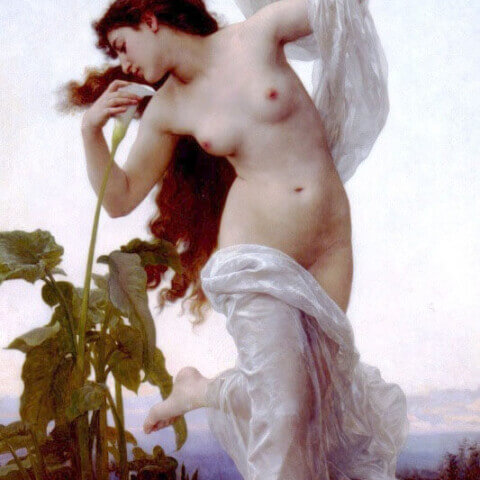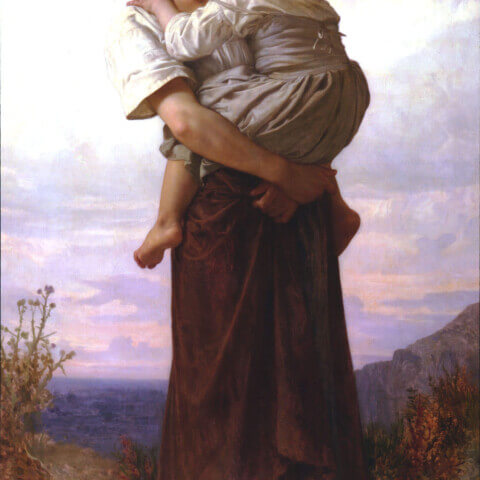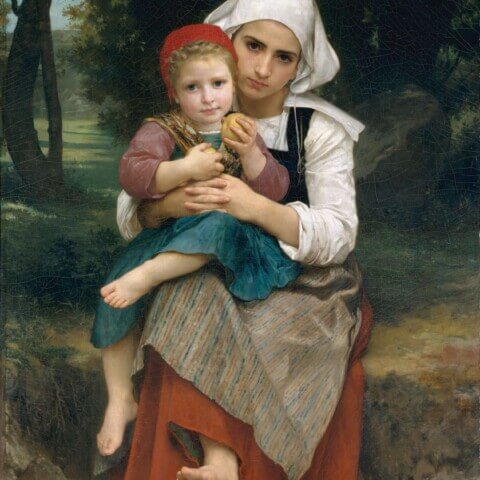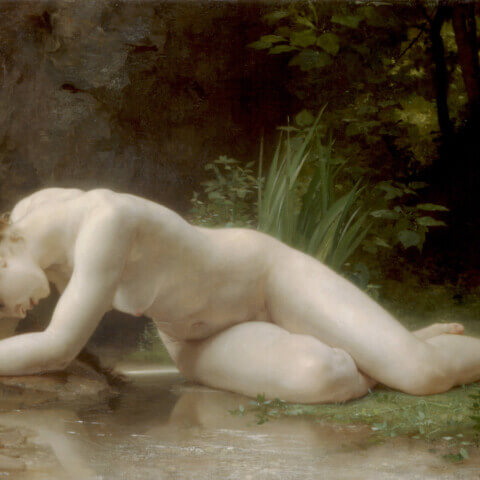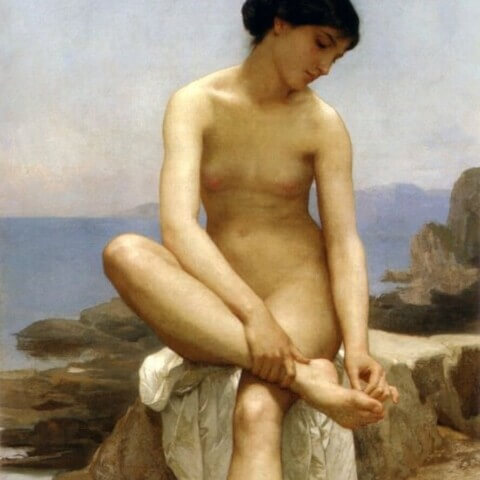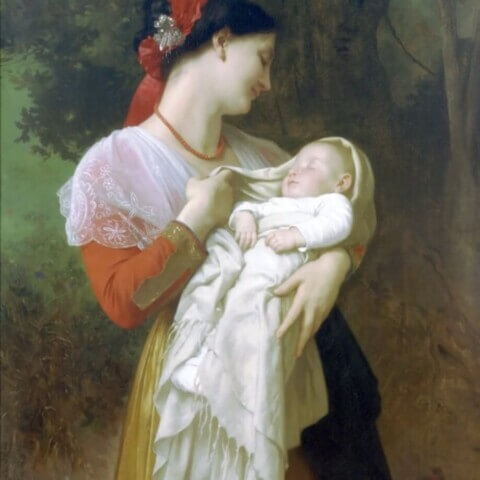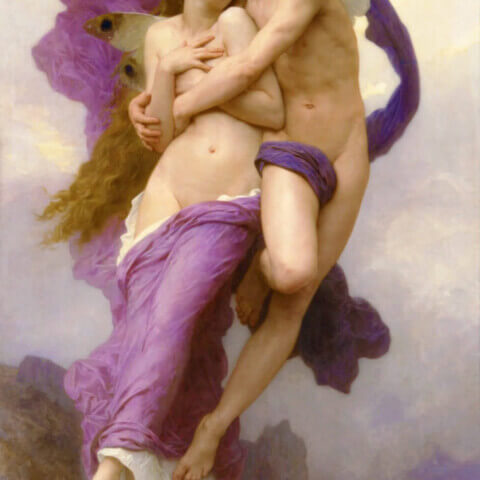William Bouguereau
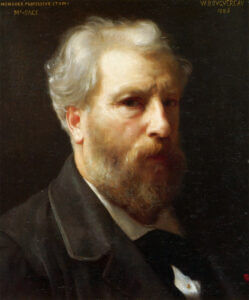
Biography of William Bouguereau
William-Adolphe Bouguereau, widely regarded as one of the greatest painters of the 19th century, was born on November 30, 1825, in La Rochelle, France. He gained international acclaim for his exquisite skills in creating realistic and highly detailed paintings, predominantly featuring mythological and religious themes, as well as portraits and genre scenes. Bouguereau’s works captured the imagination of audiences worldwide and continue to be celebrated for their technical prowess and emotional depth.
From an early age, Bouguereau displayed a remarkable talent for drawing and painting. Recognizing his potential, his family supported his artistic pursuits, and at the age of 16, he moved to Bordeaux to study under the guidance of François-Edouard Picot, a renowned Neoclassical painter. Under Picot’s tutelage, Bouguereau honed his skills in drawing, composition, and capturing the human form.
In 1850, Bouguereau earned a scholarship to study at the prestigious École des Beaux-Arts in Paris, where he further refined his technique. He immersed himself in the academic traditions of painting, studying the works of the Old Masters and mastering the intricacies of anatomy, light, and color. Bouguereau’s dedication and talent led him to win the coveted Prix de Rome in 1850, which granted him a scholarship to study at the Villa Medici in Rome.
During his four-year stay in Italy, Bouguereau fell deeply in love with the art of the Italian Renaissance, particularly the works of Raphael, whom he considered his greatest influence. He closely studied the harmonious compositions, lifelike figures, and emotional intensity found in Renaissance art, incorporating these elements into his own style. Bouguereau’s time in Italy also allowed him to explore his fascination with mythological subjects, which would become a hallmark of his later works.
Upon his return to France, Bouguereau established himself as a successful artist, receiving numerous commissions from private patrons, institutions, and the French government. His meticulously executed paintings, characterized by their smooth brushwork and attention to detail, earned him widespread acclaim. His ability to capture the human form, often depicting women and children with grace and beauty, made him highly sought after as a portraitist.
Bouguereau’s popularity extended beyond France, and his works were exhibited in major art exhibitions throughout Europe and the United States. He received numerous awards and honors, including the Grand Cross of the Legion of Honor, the highest French order of merit, in 1905.
However, as the 19th century drew to a close, Bouguereau’s traditional style fell out of favor with the rise of Impressionism and other avant-garde movements. The art world began to embrace new approaches, emphasizing individual expression and experimentation. Bouguereau’s adherence to academic principles and his preference for idealized and sentimental subjects led to his gradual decline in popularity.
Despite the changing tides of the art world, Bouguereau remained steadfast in his artistic convictions. He continued to paint prolifically, mentoring a new generation of artists who admired his technical skills and dedication to craftsmanship. Today, his works are treasured by collectors and art enthusiasts around the world, with many of his paintings housed in prestigious museums, including the Musée d’Orsay in Paris and the Metropolitan Museum of Art in New York City.
William Bouguereau passed away on August 19, 1905, leaving behind a rich legacy of remarkable paintings that continue to inspire and captivate audiences with their timeless beauty and technical mastery. His contributions to the art world have solidified his position as one of the most accomplished painters of the 19th century,

